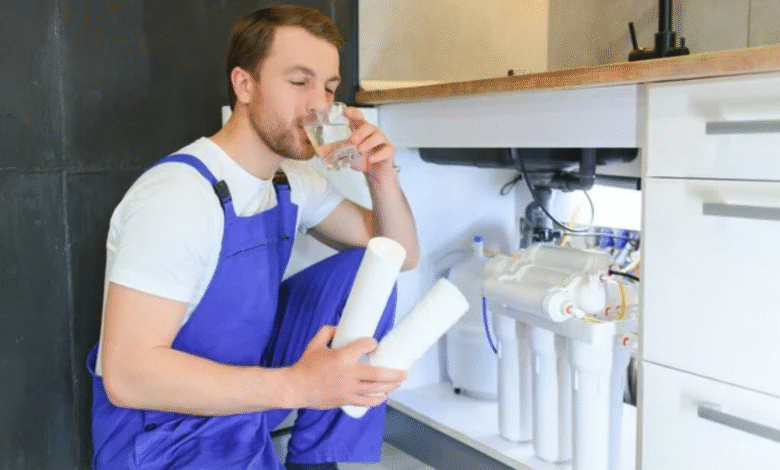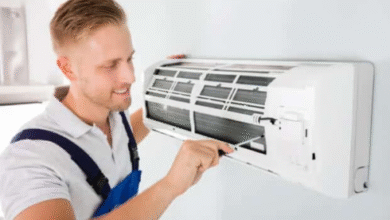Pure, Simple, Refreshing: Why Reverse Osmosis Might Be the Best Water You’ll Ever Drink

We drink water every day—multiple times a day, actually. It’s the most essential part of staying alive, and yet, a lot of us don’t think twice about what’s coming out of the tap. Sure, it’s “safe,” according to local standards. But safe doesn’t always mean clean. Or tasty. Or healthy in the long run.
If you’ve ever noticed a strange aftertaste in your glass, or wondered what’s really floating around in your water supply, you’re not alone. More and more households are making the switch to a reverse osmosis system—and not just because it’s trendy. It’s because it works.
So if you’re curious about what reverse osmosis is, whether it’s worth installing, and how to find the best setup for your home, you’re in the right place.
So, What Is Reverse Osmosis Anyway?
Let’s skip the science textbook version. Reverse osmosis (or RO) is basically a fancy but effective filtration process. It pushes water through a semi-permeable membrane that’s designed to block just about everything except pure water molecules.
What does that mean for you? Well, it removes:
- Heavy metals like lead and arsenic
- Fluoride
- Chlorine and chloramine
- Nitrates and sulfates
- Pesticides
- Bacteria and viruses (yep, even the tiny stuff)
- And that weird smell or taste you’ve been trying to ignore
It’s not just filtering—it’s purifying.
Why RO Beats the Basics
You’ve probably used a pitcher filter before. Maybe one of those faucet attachments, too. They’re okay, especially if you’re just looking to remove chlorine and improve taste. But if you really want to take control of your water quality, they don’t go far enough.
A home reverse osmosis filter takes things several steps deeper—literally. Most RO systems use multiple stages of filtration, often including:
- Sediment filter (for dirt, sand, rust)
- Carbon filter (to tackle chlorine, taste, and odor)
- RO membrane (the powerhouse that filters at the molecular level)
- Polishing filter (for taste and freshness)
- Optional remineralization filter (to add back healthy minerals and improve flavor)
The result? Water that’s not just clean—it’s crystal clear, with zero weirdness and all the hydration your body loves.
Taste Test? You’ll Notice the Difference
Ask anyone who’s made the switch: RO water just tastes better. It’s crisp, clean, and smooth. No chemical aftertaste. No metallic tang. Just water, the way nature intended—if nature had access to high-performance filtration.
It’s not just for sipping, either. Coffee brewed with RO water? Richer. Pasta? Cleaner. Ice cubes? Crystal-clear and totally tasteless (in a good way).
And if you’re trying to kick your bottled water habit? This is the easiest way to do it. You’ll get better water right from the tap—and save money in the process.
Finding the Right Fit: Choosing the Best Reverse Osmosis System
So, how do you pick the best reverse osmosis water system for your home? Here’s what to look for:
- Stages of filtration: More isn’t always better, but a good system should have at least four or five.
- NSF/ANSI certifications: These tell you it’s been tested and meets performance standards.
- Tank size and flow rate: Make sure it fits your family’s water usage needs.
- Ease of filter replacement: Some systems are tool-free and super easy to maintain.
- Remineralization option: If you prefer water with calcium and magnesium, look for a system that adds those back in.
- Warranty and customer support: Always a plus.
Brands like APEC, Home Master, and iSpring consistently rank well, but local water quality and plumbing setup can also affect what’s best for your situation.
Installation: DIY or Call the Pros?
Most under-sink RO systems are designed for DIY installation and come with decent instructions. If you’re handy, you’ll probably be fine. But if plumbing’s not your thing (no shame), a local plumber can install it in under two hours. Either way, once it’s in, it just works—quietly, reliably, day in and day out.
Maintenance is straightforward, too. Filters typically last 6–12 months, and the membrane itself can last 2–3 years. Just swap them out when the time comes and enjoy the peace of mind.
Not Just a Luxury—An Everyday Upgrade
Some folks hear “reverse osmosis” and assume it’s some luxury gadget for health nuts. But it’s not. It’s a practical solution to a very real concern: water that may not be as clean as it looks.
Whether you’re worried about aging pipes in your home, lead contamination in your city’s infrastructure, or just tired of the chlorine smell every time you run the tap—RO has your back.
It’s about more than just taste. It’s about confidence.
Final Sip: Clean Water, Clear Conscience
Here’s the thing: water is personal. It’s what you drink when you’re sick. It’s what your kids use to brush their teeth. It’s what you put in your coffee, your soup, your dog’s bowl.
Shouldn’t it be as pure as possible?
Installing a reverse osmosis system, home reverse osmosis filter, best reverse osmosis water system isn’t just a home improvement. It’s a lifestyle shift. One that gives you control, cuts waste, and makes every glass a little more satisfying.




